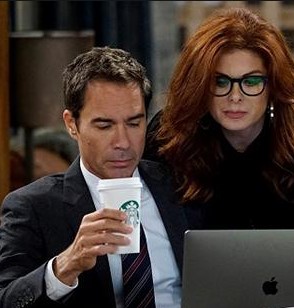Rate that product placement
 With various advertising vehicles being declared dead seemingly daily (recent victims: network TV, your morning newspaper), marketers have been scrambling for new ways to get their products in front of consumers. One of the hottest is product placements on television shows. Nielsen Media Research and Nielsen Entertainment announced in August the launch of a research study which will assess the factors impacting product placement effectiveness. The study’s initial participants include: CBS/UPN Television Networks, Discovery Television, Magna Global, Mediacom, OMD, PHD, Sprint, The Weather Channel, and Zenith Optimedia.Nielsen Media Research has been tracking the physical characteristics of product placement since the beginning of the 2003-2004 broadcast season. The objective of the study is to look beyond the on-screen appearances and determine how the context of a placement’s execution can impact consumer response. The relationship viewers have with a specific program, as well as their familiarity with the brand and product category featured, as related to the effectiveness of placements, will be analyzed. Nielsen Entertainment has also been testing the effectiveness of product placement in television, and, beginning in 2006, in film as well.
With various advertising vehicles being declared dead seemingly daily (recent victims: network TV, your morning newspaper), marketers have been scrambling for new ways to get their products in front of consumers. One of the hottest is product placements on television shows. Nielsen Media Research and Nielsen Entertainment announced in August the launch of a research study which will assess the factors impacting product placement effectiveness. The study’s initial participants include: CBS/UPN Television Networks, Discovery Television, Magna Global, Mediacom, OMD, PHD, Sprint, The Weather Channel, and Zenith Optimedia.Nielsen Media Research has been tracking the physical characteristics of product placement since the beginning of the 2003-2004 broadcast season. The objective of the study is to look beyond the on-screen appearances and determine how the context of a placement’s execution can impact consumer response. The relationship viewers have with a specific program, as well as their familiarity with the brand and product category featured, as related to the effectiveness of placements, will be analyzed. Nielsen Entertainment has also been testing the effectiveness of product placement in television, and, beginning in 2006, in film as well.
Apparently, the incentives were too effective
The Associated Press reported in July that an employee of a New York office of research company Ipsos was charged with embezzling more than $1 million from the company after audits revealed she was allegedly stealing cash intended to be used as survey incentives.
Police said the 25-year-old woman was hired in 1999 and was responsible for armored car deliveries of bundles of cash in ones, fives, 10s and 20s that were to be mailed with surveys. Arraigned on charges of grand larceny and falsifying business records, she allegedly stole the money over a period spanning December 2003 to July 8, 2005. She covered up the thefts by making larger-than-necessary requests for money and falsifying business journals. According to the New York Post, investigators have recovered only $29,000 of the missing money.
Harris joins BCS fray
Arguing about sports is as popular as watching the events themselves, and no aspect of the sporting world has caused more debate recently than college football’s Bowl Championship Series (BCS) standings. The standings - which are used to determine national rankings and, by extension, postseason bowl placements and match-ups - have long been derided as flawed,as has the methodology used to compile them - except by fans whose teams have been ranked No. 1, of course.
Harris Interactive, Rochester, N.Y., has entered the belly of the rankings beast. Beginning this season, the standings formula will consist of the USA Today Coaches Poll, a new Harris Interactive College Football Poll and an average of six computer rankings (Anderson & Hester, Richard Billingsley, Colley Matrix, Kenneth Massey, Jeff Sagarin and Peter Wolfe). The BCS standings will continue to be computed in the same manner as last year, with equal weight given to each of the three components.
“The addition of the Harris Interactive College Football Poll allows us to continue with the BCS formula as it existed in 2004,” says BCS Coordinator and Big 12 Commissioner Kevin Weiberg. “This consistency was desired by commissioners, administrators and coaches. We are very comfortable with the approach Harris has taken in constructing this new poll.”
The Harris Interactive College Football Poll will rank the top 25 teams on a weekly basis during the 2005 season, September 25 through December 4. The panel, comprised of former coaches, players, administrators and media (in approximately an 80 percent/20 percent split), with a goal of 114 participants, has been randomly drawn by Harris Interactive from among more than 300 nominations supplied by the conference offices and Notre Dame athletics director Kevin White, and is a statistically reliable representation of all 11 Division I-A conferences and independent institutions.
Harris Interactive assigned each nominee an identification number and randomly sent invitations. Each potential panelist received an overnight letter explaining the voting process and inquiring about their interest and commitment. Harris Interactive followed up with phone calls to determine willingness to participate. Panelist slots are filled by conference, each represented equally, all randomly selected to be invited to participate from among its list of nominees. The names of all voters will be released prior to the start of the season.
Harris Interactive will post the poll results to its Web site each Sunday. For the December 4th poll, individual votes will be made public. The first BCS Standings of the 2005 season will be released October 17th. Arguments will no doubt begin shortly thereafter.
